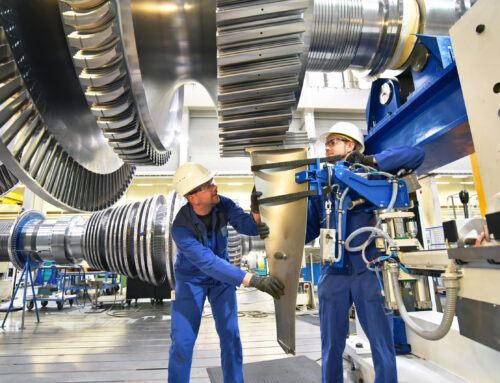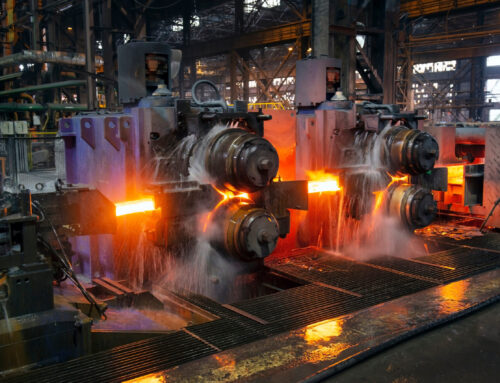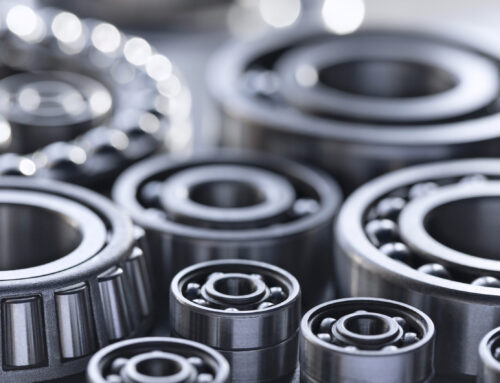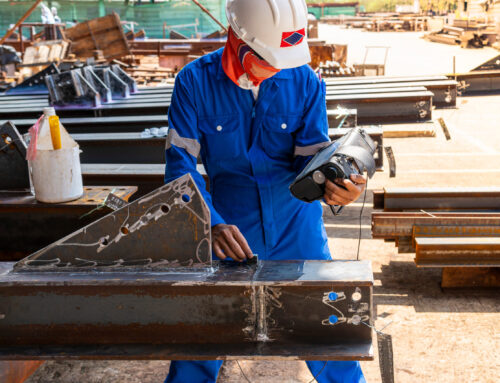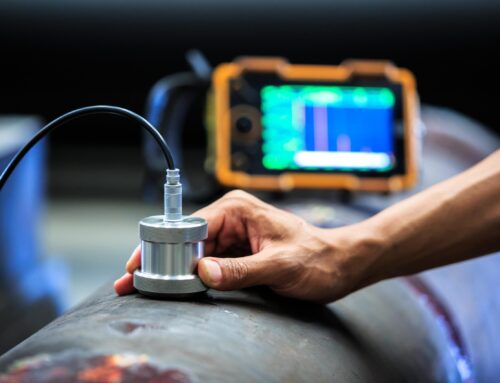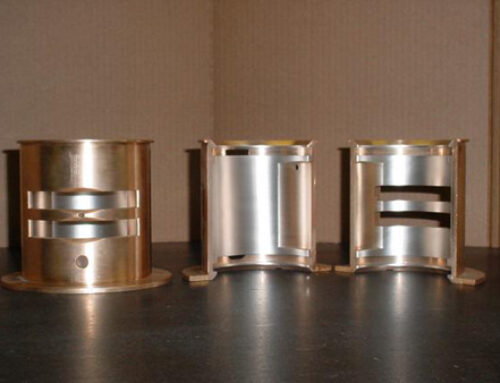
Babbitt bearing repair or replace? Use our plant manager-tested decision framework to cut downtime, reduce costs, and choose confidently. Read the guide now.
Why this decision matters in your plant
When a critical machine goes down, the question is simple yet high stakes. Do you choose babbitt bearing repair, rebabbitting, or a brand-new bearing? The right choice can get production back online in days instead of weeks and save thousands in maintenance costs. The wrong choice can extend downtime, repeat failures, and create expensive emergencies. This guide shows how plant managers approach the decision with a clear, practical framework. It uses insights from Fusion Babbitting, a Milwaukee-based specialist in babbitt bearing repair, rebabbitting, rebuilding, reverse engineering, and new manufacturing. Established in 1988, Fusion Babbitting supports facilities nationwide with 24-hour emergency services, so the process and timelines described here reflect real-world constraints.
Repair, rebabbitt, or replace: what is the difference?
Before you choose a path, align on definitions. Each option has a different scope, lead time, and risk profile.
- Babbitt bearing repair typically involves cleaning, inspection, minor machining, contact pattern correction, and selective patching. It works for light scoring, localized wear, and small defects where the babbitt layer and shell remain sound.
- Rebabbitting removes the old lining, prepares the base metal, and casts a new babbitt layer. Fusion Babbitting uses centrifugal casting for strong bonding and consistent integrity. After casting, the bearing is machined to final size, grooved per spec, and finished to OEM or better tolerances. This is the go-to when the base shell is healthy but the babbitt is worn or damaged.
- New bearing manufacturing creates a new shell and babbitt lining to the original or upgraded design. This path is best when the shell is cracked, distorted, or undersized, or when the original design no longer meets load, speed, or temperature requirements.
At a high level, repair is the fastest but narrowest option, rebabbitting balances speed and reliability for most failures, and new manufacturing is best for severe damage or design changes. Fusion Babbitting delivers all three outcomes and can guide you to the smartest path based on data and timelines.
The decision framework plant managers use
Use this simple step-by-step approach to move from symptoms to a confident decision. It ensures you consider cost, time, risk, and long-term reliability in one pass.
Step 1: Confirm criticality and downtime cost
Estimate the hourly cost of downtime and the expected outage duration for each option. If an asset is production-critical, lead time and logistics can outweigh a small price difference between rebabbitting and new manufacture. Fusion Babbitting offers 24-hour emergency service, which can reduce outage hours and tilt the decision toward babbitt bearing repair or rebabbitting when lead time is the dominant factor.
Step 2: Gather bearing and machine data
Collect key information before teardown if possible. Include bearing type and dimensions, machine speed and load, lubrication method and oil grade, operating temperatures, vibration history, and any recent alignment or coupling changes. Photos of damage and bluing patterns help vendors assess repairability fast. Fusion Babbitting can advise on what to measure and can work from partial data, but better inputs mean faster and more accurate recommendations.
Step 3: Inspect condition and bond integrity
During inspection, look for signs that limit repair or demand a deeper fix. Typical red flags include heavy wiping, fatigue cracking, spalling, deep scoring, overheat discoloration, corrosion, or evidence of contamination. Check the shell for fretting, cracks, brinelling, or distortion. Confirm babbitt-to-shell bond integrity. Fusion Babbitting uses proven cleaning and non-destructive methods to verify bond strength before recommending rebabbitting. If the shell is true and sound, rebabbitting is usually viable and cost-effective.
Step 4: Diagnose root cause
A fast repair that does not address the cause will fail again. Verify oil supply and quality, filtration, and contamination control. Check alignment, soft foot, journal condition, shaft runout, and loading. Confirm cooling and temperature control. Ensure the groove pattern and clearances match speed, load, and lubrication method. Fusion Babbitting’s team often provides design updates during babbitt bearing repair or rebabbitting, such as improved groove patterns or material selection, to mitigate the original failure mode.
Step 5: Choose a path with a quick scorecard
- If the shell is intact, dimensions are recoverable, and damage is confined to the lining, choose rebabbitting.
- If damage is minor and localized with good bond integrity, consider targeted babbitt bearing repair for speed.
- If the shell is cracked, distorted, undersize, or the design is obsolete, move to new manufacturing or reverse engineering.
- If lead time risk endangers production, prioritize the path with the shortest reliable turnaround. Emergency rebabbitting often wins here.
- If root cause demands a design upgrade, evaluate new manufacturing or a redesigned rebabbitt with updated features.
When rebabbitting is the clear winner
Rebabbitting provides a new working surface with precise geometry while retaining the existing shell. It is often the most economical and fastest route to OEM-level performance.
- The shell is structurally sound and within recoverable geometry.
- Damage includes wipe, scoring, or fatigue cracking limited to the babbitt lining.
- Bond integrity can be restored by proper preparation and centrifugal casting.
- There is a need to return to service quickly with confidence in performance.
- OEM part lead times are long or the OEM no longer supports the asset.
- There is a desire to update groove patterns or clearances to improve reliability.
Fusion Babbitting’s centrifugal casting process uses certified babbitt materials to achieve high bond strength, consistent structure, and stable performance across load and temperature ranges. Finished bearings are machined to precise tolerances and checked against OEM specifications and customer requirements.
When a new bearing is the smarter move
Sometimes the shell is the problem or design demands surpass the current bearing’s capability. In these cases, new manufacturing or reverse engineering is the best investment.
- The shell shows cracks, heavy fretting, or distortion beyond correction.
- There is severe corrosion or loss of base metal that compromises strength.
- Dimensions cannot be recovered within tolerance without risking integrity.
- The bearing must be redesigned for higher loads, speeds, or temperatures.
- The original part is obsolete and a full reverse engineering effort is needed.
- Regulatory or quality requirements call for new documentation, serialization, or upgraded materials.
Fusion Babbitting reverse engineers obsolete bearings with detailed drawings and can manufacture new components with general fabrication and machining capacity up to 120 inches in diameter and length. This scale allows support for large turbines, hydro equipment, marine shafts, and heavy mill machinery.
Hidden costs that tilt the decision
Beyond price and lead time, consider less obvious costs that affect whole-life value.
- Recurring failure costs if root cause is not solved.
- Expediting, shipping, and rigging for oversized components.
- Inspection delays from incomplete data or unclear specs.
- Inventory carrying cost if you buy spares unnecessarily.
- Operator overtime, contractor mobilization, and restart risks.
- Energy waste and product scrap caused by running with marginal bearings.
A well-executed rebabbitting project can remove several of these hidden costs by restoring geometry, improving lubrication, and returning the machine to stable operation fast.
How Fusion Babbitting delivers reliability on both paths
Babbitt bearing repair and rebabbitting process
Fusion Babbitting follows a disciplined workflow for babbitt bearing repair and rebabbitting. After receiving the component, the team documents condition and dimensions, then strips the old lining and prepares the surface. Centrifugal casting with certified babbitt alloys achieves a strong, uniform bond. Machining restores bores, faces, and grooves to specification. Finish operations include precision inspection, contact pattern checks, and verification against OEM or customer drawings. Where wear has affected adjacent components, arc flame spray is used to restore surfaces and machine them back to original specifications. Each step is controlled to meet or exceed OEM requirements, with quality checks that provide traceability and peace of mind.
Reverse engineering and new manufacturing
For obsolete or damaged bearings, Fusion Babbitting can reverse engineer originals to produce accurate, modernized replacements. The team creates detailed drawings, clarifies tolerances, and matches materials and groove patterns to current duty. New manufacturing supports OEMs and end users who need custom, high-precision bearings. This is ideal for upgrades or standardization programs across fleets.
Capacity, industries, and emergency response
Fusion Babbitting serves a wide range of plants and fleets that rely on precision bearings. The company supports urgent maintenance with 24-hour emergency service and handles large formats with general fabrication and machining capacity up to 120 inches. Services include repair, rebabbitting, rebuilding, centrifugal casting, arc flame spray application, reverse engineering, and new manufacturing. Industries served include:
- Aluminum Mills
- Cement and Chemical Plants
- Fossil and Nuclear Plants
- Hydro and Pump Storage
- Marine Repair and Shipyards
- Mines and Steel Mills
- Motor Repair Shops
- Paper Mills
- Crushed Stone Producers
Common applications include electric motors, hydro power systems, pumps, and turbines. If it runs on a babbitt-lined bearing, Fusion Babbitting can support it.
Checklist: information to send with your RFQ
Improve accuracy and speed by sending this information with your request for babbitt bearing repair or replacement.
- Equipment type, speed, load, and duty cycle
- Bearing style, dimensions, and material, if known
- Lube method, oil grade, and filtration details
- Operating temperatures and temperature control method
- Photos of damage, contact pattern, and journal condition
- Any OEM drawings, prior repair records, or spec sheets
- Preferred clearances, groove pattern, and fit details
- Target ship date, outage schedule, and delivery constraints
- Shipping weight and packaging requirements
- Failure description and suspected root cause
Fusion Babbitting helps customers fill gaps in the above data and can create drawings when none exist.
Real-world decision examples
Hydro pump storage station chooses rebabbitting to cut outage time
A hydro facility experienced elevated temperatures and vibration on a pump motor bearing. Inspection showed wiped babbitt and fine scoring, but the shell and housing were true. OEM lead time for a new bearing was six weeks. Fusion Babbitting recommended rebabbitting with updated oil grooves and a slight clearance adjustment to match speed and oil viscosity. With 24-hour emergency support, the bearing was rebabbitted, machined, and returned in days. The unit returned to service on schedule, and follow-up vibration readings showed stable operation.
Paper mill dryer section moves to new manufacturing for long-term reliability
A paper mill found heavy fatigue cracking and a distorted shell in a dryer section bearing. Reuse would have required aggressive machining that risked structural integrity. Fusion Babbitting reverse engineered the original, produced a new shell, and applied a centrifugal cast lining with improved groove design for the mill’s high-temperature oil. The new bearing delivered a cooler running temperature and extended maintenance intervals, reducing unplanned stops.
FAQ: babbitt bearing repair vs replacement
How do I know if my bearing is a candidate for rebabbitting?
If the shell is sound and damage is limited to the lining, rebabbitting is very likely. A vendor assessment that includes bond inspection and geometry checks will confirm it.
How fast can babbitt bearing repair be completed?
Timing depends on size, complexity, and workload. With emergency service, simple repairs can be completed quickly, while full rebabbitting with machining typically requires a short but predictable turnaround. Fusion Babbitting provides realistic schedules upfront and works nights and weekends when needed.
Will a rebabbitted bearing perform like new?
When properly cast, machined, and installed, a rebabbitted bearing can perform at or above OEM specifications. Many plants also take the opportunity to improve grooves or clearances to match current operating conditions.
What if I do not have drawings for an obsolete bearing?
Fusion Babbitting offers reverse engineering. The team measures the original, creates detailed drawings, and manufactures the bearing to spec so you can document and reorder in the future.
Can you repair journals or housings associated with babbitt bearings?
Yes. Fusion Babbitting uses arc flame spray to restore worn components and machines them back to the original dimensions. This supports a complete solution so the repaired bearing runs on a proper surface.
Why choose Fusion Babbitting
Fusion Babbitting Co., Inc. has delivered reliable babbitt bearing repair and manufacturing since 1988. Based at 4540 W. Burnham St., Milwaukee, WI, the company serves plants nationwide with 24-hour emergency assistance. Services include repair, rebabbitting, rebuilding, centrifugal casting with certified materials, arc flame spray application, reverse engineering with detailed drawings, general fabrication and machining up to 120 inches, and new manufacturing for OEMs. With over 40 years of combined expertise and advanced equipment, Fusion Babbitting is dedicated to improving bearing quality, uptime, and performance. The team understands the reality of outages and commits to honest schedules, precise workmanship, and clear communication from quote to delivery.
Make your decision with confidence
If you need help deciding between babbitt bearing repair, rebabbitting, or a new bearing, reach out to Fusion Babbitting for a fast, practical recommendation. Provide the checklist data, share your outage window, and the team will propose the best path based on cost, time, risk, and long-term reliability.
Contact Fusion Babbitting
Fusion Babbitting Co., Inc. 4540 W. Burnham St., Milwaukee, WI 53219 Phone: 414.645.5800 Toll-Free: 800.613.5118 Email: sales@fusionbabbitting.com
Whether your application is in aluminum mills, cement and chemical plants, fossil and nuclear plants, hydro and pump storage, marine repair and shipyards, mines and steel mills, motor repair shops, paper mills, or crushed stone producers, Fusion Babbitting is ready to help. From electric motors and pumps to turbines and hydro power systems, you can count on a partner who understands the pressure of downtime and the value of dependable bearings. Start with a quick consultation to choose the right path and get your equipment back online fast.

